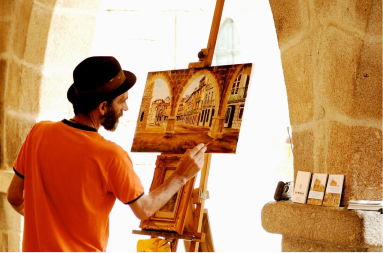Color mixing is an essential skill for any artist, whether you’re a beginner or a seasoned professional. Understanding how to blend colors effectively can elevate your artwork and bring your creative vision to life. Here are some expert tips to help you master this fundamental technique:
- Understand the Color Wheel
The color wheel is your best friend when it comes to mixing colors. Familiarize yourself with primary, secondary, and tertiary colors, as well as complementary and analogous color schemes. This knowledge will guide you in creating harmonious palettes. - Start with Primary Colors
Limit your palette to red, blue, and yellow at first. By mixing these primary colors in different ratios, you can create virtually any hue while gaining a deeper understanding of how colors interact. - Experiment with Warm and Cool Tones
Each color has warm and cool variations (e.g., warm red vs. cool red). Experimenting with these tones can help you achieve more nuanced results in your artwork. - Use a Palette Knife for Precision
A palette knife allows for better control when blending paints compared to brushes, ensuring cleaner and more accurate mixtures.
Brush Techniques Every Artist Should Know
The right brush technique can transform your painting process and final results. Here are some professional tips on using brushes effectively:
- Choose the Right Brush for the Job
Different brushes serve different purposes—round brushes are great for detail work, flat brushes are ideal for bold strokes, and fan brushes excel at blending or creating textures like foliage. - Master Basic Strokes
Practice basic strokes such as stippling (dotting), hatching (parallel lines), and scumbling (dry brushing) to add variety and depth to your work. - Maintain Proper Brush Pressure
Adjusting pressure can create different effects—light pressure produces delicate lines while heavier pressure creates bold marks. - Clean Your Brushes Regularly
Always clean your brushes thoroughly after each session using soap or specialized brush cleaners to maintain their shape and longevity.
How to Preserve Finished Artwork Like a Pro
Preserving finished artwork ensures its longevity while maintaining its original vibrancy. Follow these steps to protect your creations:
- Seal Your Work with Varnish or Fixative
For acrylic or oil paintings, apply a varnish layer once the paint has fully dried (usually 1-6 months for oils). For drawings or pastels, use a fixative spray designed for that medium. - Frame Your Artwork Properly
Use acid-free mats and UV-protective glass when framing works on paper to prevent fading or discoloration over time. - Store Artwork Correctly
Store unframed pieces in archival-quality sleeves or portfolios in a cool, dry environment away from direct sunlight or humidity. - Handle with Care
Always handle artwork by its edges or frame to avoid smudges, fingerprints, or accidental damage.
By following these professional tips on color mixing, brush techniques, and preservation methods, you’ll not only enhance your artistic skills but also ensure that your masterpieces stand the test of time!

